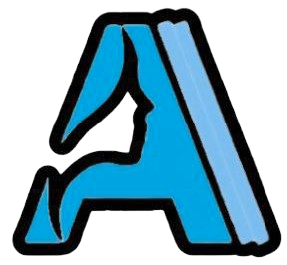Rhinoplasty, commonly known as a “nose job,” is a surgical procedure designed to reshape the nose and improve its function or aesthetics. While revision rhinoplasty addresses issues from previous surgeries, primary rhinoplasty refers to the initial procedure. This first step is crucial, as it sets the foundation for the nose’s future appearance and functionality. In this comprehensive guide, we’ll delve into the intricacies of primary rhinoplasty, exploring its indications, techniques, recovery, and the scientific research shaping its evolution.
Understanding Primary Rhinoplasty: Beyond Aesthetics
Primary rhinoplasty isn’t merely about achieving a more aesthetically pleasing nose. It’s a complex procedure that addresses a variety of concerns, including:
- Cosmetic Concerns:
- Correcting a dorsal hump (a bump on the bridge of the nose).
- Refining a wide or bulbous nasal tip.
- Narrowing wide nostrils.
- Straightening a crooked nose.
- Adjusting the nasolabial angle (the angle between the base of the nose and the upper lip).
- Functional Issues:
- Improving breathing difficulties caused by a deviated septum.
- Correcting nasal valve collapse.
- Addressing congenital nasal deformities.
- Repairing nasal injuries.
A successful primary rhinoplasty requires a thorough understanding of nasal anatomy, surgical techniques, and the patient’s individual goals. A skilled surgeon considers the patient’s facial features, skin type, and overall health to create a natural-looking and functional result.
The Surgical Journey: Techniques and Approaches
Primary rhinoplasty can be performed using two main approaches:
- Open Rhinoplasty:
This technique involves a small incision across the columella (the strip of tissue separating the nostrils). This provides the surgeon with direct visualization of the nasal structures, allowing for more precise modifications, especially in complex cases. - Closed Rhinoplasty: This approach involves incisions made inside the nostrils, leaving no external scars. It’s often preferred for less complex cases and offers a faster recovery.
The specific techniques employed during rhinoplasty vary depending on the patient’s needs. Common procedures include:
- Septoplasty: Straightening a deviated septum to improve airflow.
- Osteotomies: Controlled fractures of the nasal bones to reshape the bridge of the nose.
- Tip Plasty: Reshaping the nasal tip using cartilage grafting or suturing techniques.
- Cartilage Grafting: Using cartilage from the septum, ear, or rib to augment or reshape nasal structures.
The Importance of Pre-Operative Planning
A successful primary rhinoplasty hinges on meticulous pre-operative planning. This involves:
- Detailed Consultation: The surgeon carefully evaluates the patient’s medical history, performs a physical examination, and discusses their goals and expectations.
- Computer Imaging: Digital imaging software is used to create simulations of potential surgical outcomes, allowing patients to visualize the anticipated results.
- Photography: Standardized photographs are taken from various angles to document the patient’s pre-operative nasal anatomy.
- Understanding patient expectations: The surgeon must have a clear understanding of what the patient wants, and must also be able to communicate what is realistically possible.
Recovery and Post-Operative Care
Recovery from primary rhinoplasty typically involves some bruising and swelling, which gradually subsides over several weeks. Pain is usually minimal and can be managed with medication.
Post-operative care is crucial for optimal healing and results. This may include:
- Wearing a nasal splint: To support the nose and minimize swelling.
- Applying cold compresses: To reduce swelling and bruising.
- Avoiding strenuous activity: For several weeks.
- Elevating the head: To minimize swelling.
- Regular follow-up appointments: To monitor healing and address any concerns.
Scientific Advancements and Research
The field of rhinoplasty is constantly evolving, with ongoing research focused on improving techniques and outcomes.
- Advances in Cartilage Grafting: Studies in the US and Europe have explored the use of various cartilage grafts, including diced cartilage wrapped in fascia, to achieve predictable and natural-looking results. For example, research has focused on the long term viability of using rib cartilage in complicated rhinoplasty cases.
- The use of Piezoelectric devices: Piezoelectric devices have gained popularity for performing osteotomies, as they offer greater precision and minimize trauma to surrounding tissues. European studies have shown the benefits of piezoelectric rhinoplasty in reducing post-operative swelling and bruising.
- The role of 3D imaging and printing: 3D imaging and printing technologies are being used to create patient-specific surgical guides and implants, enhancing surgical precision and predictability. Research conducted in the US has shown the advantages of using 3D printed guides.
- Patient Reported Outcome Measures (PROMs): Research is increasingly focusing on PROMs to evaluate the impact of rhinoplasty on patients’ quality of life and satisfaction. Studies are being conducted to identify factors that contribute to positive PROMs.
Choosing the Right Surgeon
Selecting a qualified and experienced surgeon is paramount for a successful primary rhinoplasty. Look for a board-certified plastic surgeon or facial plastic surgeon with extensive experience in rhinoplasty. Review before-and-after photos, read patient reviews, and schedule consultations with multiple surgeons to find the best fit.
To wrap up
Primary rhinoplasty is a transformative procedure that can enhance both the aesthetics and function of the nose. By understanding the intricacies of the procedure, selecting a skilled surgeon, and adhering to post-operative care instructions, patients can achieve natural-looking and long-lasting results. The continued research and improvement of techniques will continue to enhance patient outcomes.
Schedule a consultation with a board-certified facial plastic surgeon today to discuss your goals and determine if primary rhinoplasty is right for you. Take the first step towards a more confident you.
